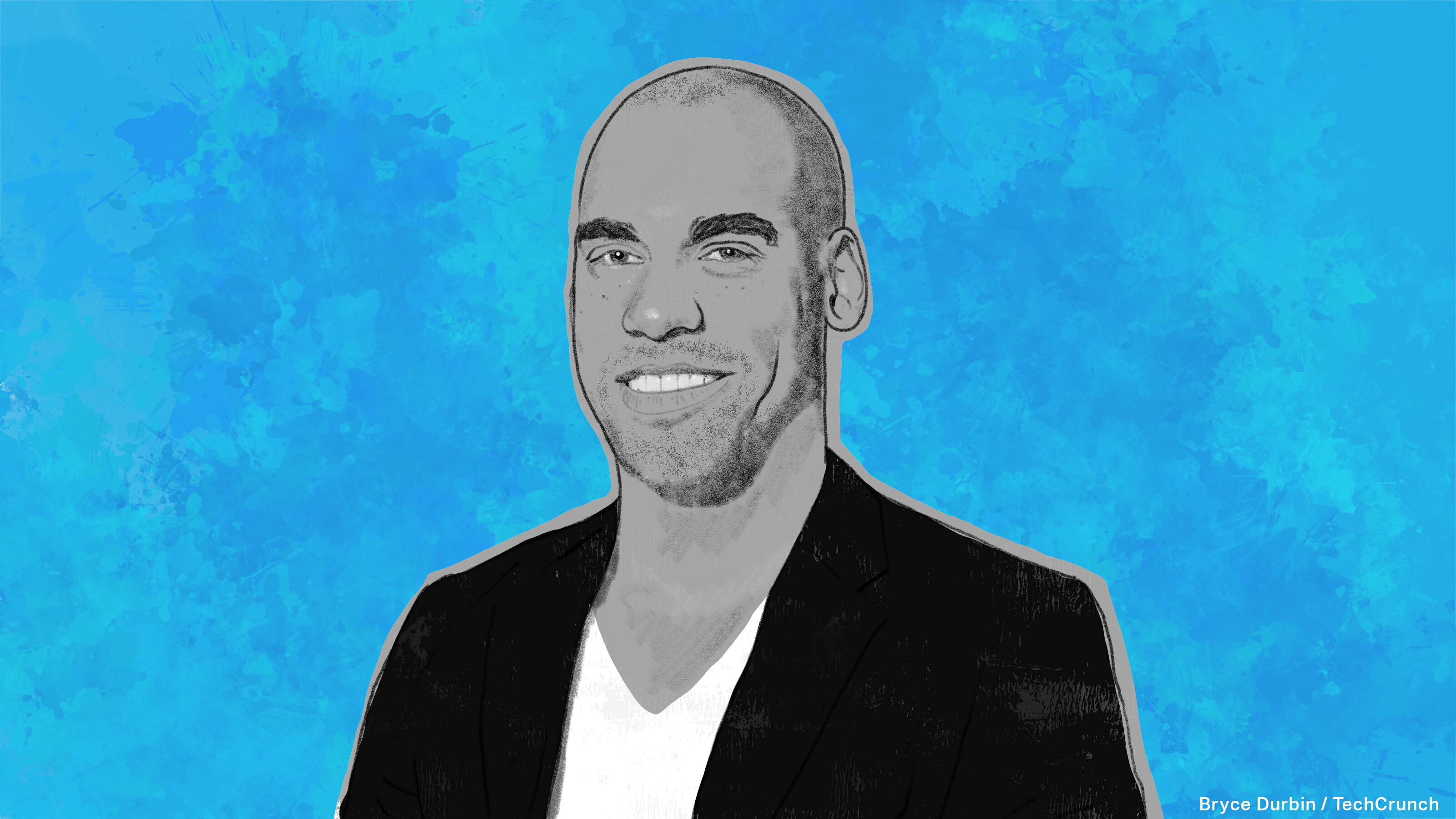The need for markets-focused competition watchdogs and consumer-centric privacy regulators to think outside their respective ‘legal silos’ and find creative ways to work together to tackle the challenge of big tech market power was the impetus for a couple of fascinating panel discussions organized by the Centre for Economic Policy Research (CEPR), which were livestreamed yesterday but are available to view on-demand here.
The conversations brought together key regulatory leaders from Europe and the US — giving a glimpse of what the future shape of digital markets oversight might look like at a time when fresh blood has just been injected to chair the FTC so regulatory change is very much in the air (at least around tech antitrust).
CEPR’s discussion premise is that integration, not merely intersection, of competition and privacy/data protection law is needed to get a proper handle on platform giants that have, in many cases, leveraged their market power to force consumers to accept an abusive ‘fee’ of ongoing surveillance.
That fee both strips consumers of their privacy and helps tech giants perpetuate market dominance by locking out interesting new competition (which can’t get the same access to people’s data so operates at a baked in disadvantage).
A running theme in Europe for a number of years now, since a 2018 flagship update to the bloc’s data protection framework (GDPR), has been the ongoing under-enforcement around the EU’s ‘on-paper’ privacy rights — which, in certain markets, means regional competition authorities are now actively grappling with exactly how and where the issue of ‘data abuse’ fits into their antitrust legal frameworks.
The regulators assembled for CEPR’s discussion included, from the UK, the Competition and Markets Authority’s CEO Andrea Coscelli and the information commissioner, Elizabeth Denham; from Germany, the FCO’s Andreas Mundt; from France, Henri Piffaut, VP of the French competition authority; and from the EU, the European Data Protection Supervisor himself, Wojciech Wiewiórowski, who advises the EU’s executive body on data protection legislation (and is the watchdog for EU institutions’ own data use).
The UK’s CMA now sits outside the EU, of course — giving the national authority a higher profile role in global mergers & acquisition decisions (vs pre-brexit), and the chance to help shape key standards in the digital sphere via the investigations and procedures it chooses to pursue (and it has been moving very quickly on that front).
The CMA has a number of major antitrust probes open into tech giants — including looking into complaints against Apple’s App Store and others targeting Google’s plan to depreciate support for third party tracking cookies (aka the so-called ‘Privacy Sandbox’) — the latter being an investigation where the CMA has actively engaged the UK’s privacy watchdog (the ICO) to work with it.
Only last week the competition watchdog said it was minded to accept a set of legally binding commitments that Google has offered which could see a quasi ‘co-design’ process taking place, between the CMA, the ICO and Google, over the shape of the key technology infrastructure that ultimately replaces tracking cookies. So a pretty major development.
Germany’s FCO has also been very active against big tech this year — making full use of an update to the national competition law which gives it the power to take proactive inventions around large digital platforms with major competitive significance — with open procedures now against Amazon, Facebook and Google.
The Bundeskartellamt was already a pioneer in pushing to loop EU data protection rules into competition enforcement in digital markets in a strategic case against Facebook, as we’ve reported before. That closely watched (and long running) case — which targets Facebook’s ‘superprofiling’ of users, based on its ability to combine user data from multiple sources to flesh out a single high dimension per-user profile — is now headed to Europe’s top court (so likely has more years to run).
But during yesterday’s discussion Mundt confirmed that the FCO’s experience litigating that case helped shape key amendments to the national law that’s given him beefier powers to tackle big tech. (And he suggested it’ll be a lot easier to regulate tech giants going forward, using these new national powers.)
“Once we have designated a company to be of ‘paramount significance’ we can prohibit certain conduct much more easily than we could in the past,” he said. “We can prohibit, for example, that a company impedes other undertaking by data processing that is relevant for competition. We can prohibit that a use of service depends on the agreement to data collection with no choice — this is the Facebook case, indeed… When this law was negotiated in parliament parliament very much referred to the Facebook case and in a certain sense this entwinement of competition law and data protection law is written in a theory of harm in the German competition law.
“This makes a lot of sense. If we talk about dominance and if we assess that this dominance has come into place because of data collection and data possession and data processing you need a parameter in how far a company is allowed to gather the data to process it.”
“The past is also the future because this Facebook case… has always been a big case. And now it is up to the European Court of Justice to say something on that,” he added. “If everything works well we might get a very clear ruling saying… as far as the ECN [European Competition Network] is concerned how far we can integrate GDPR in assessing competition matters.
“So Facebook has always been a big case — it might get even bigger in a certain sense.”
France’s competition authority and its national privacy regulator (the CNIL), meanwhile, have also been joint working in recent years.
Including over a competition complaint against Apple’s pro-user privacy App Tracking Transparency feature (which last month the antitrust watchdog declined to block) — so there’s evidence there too of respective oversight bodies seeking to bridge legal silos in order to crack the code of how to effectively regulate tech giants whose market power, panellists agreed, is predicated on earlier failures of competition law enforcement that allowed tech platforms to buy up rivals and sew up access to user data, entrenching advantage at the expense of user privacy and locking out the possibility of future competitive challenge.
The contention is that monopoly power predicated upon data access also locks consumers into an abusive relationship with platform giants which can then, in the case of ad giants like Google and Facebook, extract huge costs (paid not in monetary fees but in user privacy) for continued access to services that have also become digital staples — amping up the ‘winner takes all’ characteristic seen in digital markets (which is obviously bad for competition too).
Yet, traditionally at least, Europe’s competition authorities and data protection regulators have been focused on separate workstreams.
The consensus from the CEPR panels was very much that that is both changing and must change if civil society is to get a grip on digital markets — and wrest control back from tech giants to that ensure consumers and competitors aren’t both left trampled into the dust by data-mining giants.
Denham said her motivation to dial up collaboration with other digital regulators was the UK government entertaining the idea of creating a one-stop-shop ‘Internet’ super regulator. “What scared the hell out of me was the policymakers the legislators floating the idea of one regulator for the Internet. I mean what does that mean?” she said. “So I think what the regulators did is we got to work, we got busy, we become creative, got our of our silos to try to tackle these companies — the likes of which we have never seen before.
“And I really think what we have done in the UK — and I’m excited if others think it will work in their jurisdictions — but I think that what really pushed us is that we needed to show policymakers and the public that we had our act together. I think consumers and citizens don’t really care if the solution they’re looking for comes from the CMA, the ICO, Ofcom… they just want somebody to have their back when it comes to protection of privacy and protection of markets.
“We’re trying to use our regulatory levers in the most creative way possible to make the digital markets work and protect fundamental rights.”
During the earlier panel, the CMA’s Simeon Thornton, a director at the authority, made some interesting remarks vis-a-vis its (ongoing) Google ‘Privacy Sandbox’ investigation — and the joint working it’s doing with the ICO on that case — asserting that “data protection and respecting users’ rights to privacy are very much at the heart of the commitments upon which we are currently consulting”.
“If we accept the commitments Google will be required to develop the proposals according to a number of criteria including impacts on privacy outcomes and compliance with data protection principles, and impacts on user experience and user control over the use of their personal data — alongside the overriding objective of the commitments which is to address our competition concerns,” he went on, adding: “We have worked closely with the ICO in seeking to understand the proposals and if we do accept the commitments then we will continue to work closely with the ICO in influencing the future development of those proposals.”
“If we accept the commitments that’s not the end of the CMA’s work — on the contrary that’s when, in many respects, the real work begins. Under the commitments the CMA will be closely involved in the development, implementation and monitoring of the proposals, including through the design of trials for example. It’s a substantial investment from the CMA and we will be dedicating the right people — including data scientists, for example, to the job,” he added. “The commitments ensure that Google addresses any concerns that the CMA has. And if outstanding concerns cannot be resolved with Google they explicitly provide for the CMA to reopen the case and — if necessary — impose any interim measures necessary to avoid harm to competition.
“So there’s no doubt this is a big undertaking. And it’s going to be challenging for the CMA, I’m sure of that. But personally I think this is the sort of approach that is required if we are really to tackle the sort of concerns we’re seeing in digital markets today.”
Thornton also said: “I think as regulators we do need to step up. We need to get involved before the harm materializes — rather than waiting after the event to stop it from materializing, rather than waiting until that harm is irrevocable… I think it’s a big move and it’s a challenging one but personally I think it’s a sign of the future direction of travel in a number of these sorts of cases.”
Also speaking during the regulatory panel session was FTC commissioner Rebecca Slaughter — a dissenter on the $5BN fine it hit Facebook with back in 2019 for violating an earlier consent order (as she argued the settlement provided no deterrent to address underlying privacy abuse, leaving Facebook free to continue exploiting users’ data) — as well as Chris D’Angelo, the chief deputy AG of the New York Attorney General, which is leading a major states antitrust case against Facebook.
Slaughter pointed out that the FTC already combines a consumer focus with attention on competition but said that historically there has been separation of divisions and investigations — and she agreed on the need for more joined-up working.
She also advocated for US regulators to get out of a pattern of ineffective enforcement in digital markets on issues like privacy and competition where companies have, historically, been given — at best — what amounts to wrist slaps that don’t address root causes of market abuse, perpetuating both consumer abuse and market failure. And be prepared to litigate more.
As regulators toughen up their stipulations they will need to be prepared for tech giants to push back — and therefore be prepared to sue instead of accepting a weak settlement.
“That is what is most galling to me that even where we take action, in our best faith good public servants working hard to take action, we keep coming back to the same questions, again and again,” she said. “Which means that the actions we are taking isn’t working. We need different action to keep us from having the same conversation again and again.”
Slaughter also argued that it’s important for regulators not to pile all the burden of avoiding data abuses on consumers themselves.
“I want to sound a note of caution around approaches that are centered around user control,” she said. “I think transparency and control are important. I think it is really problematic to put the burden on consumers to work through the markets and the use of data, figure out who has their data, how it’s being used, make decisions… I think you end up with notice fatigue; I think you end up with decision fatigue; you get very abusive manipulation of dark patterns to push people into decisions.
“So I really worry about a framework that is built at all around the idea of control as the central tenant or the way we solve the problem. I’ll keep coming back to the notion of what instead we need to be focusing on is where is the burden on the firms to limit their collection in the first instance, prohibit their sharing, prohibit abusive use of data and I think that that’s where we need to be focused from a policy perspective.
“I think there will be ongoing debates about privacy legislation in the US and while I’m actually a very strong advocate for a better federal framework with more tools that facilitate aggressive enforcement but I think if we had done it ten years ago we probably would have ended up with a notice and consent privacy law and I think that that would have not been a great outcome for consumers at the end of the day. So I think the debate and discussion has evolved in an important way. I also think we don’t have to wait for Congress to act.”
As regards more radical solutions to the problem of market-denting tech giants — such as breaking up sprawling and (self-servingly) interlocking services empires — the message from Europe’s most ‘digitally switched on’ regulators seemed to be don’t look to us for that; we are going to have to stay in our lanes.
So tl;dr — if antitrust and privacy regulators’ joint working just sums to more intelligent fiddling round the edges of digital market failure, and it’s break-ups of US tech giants that’s what’s really needed to reboot digital markets, then it’s going to be up to US agencies to wield the hammers. (Or, as Coscelli elegantly phrased it: “It’s probably more realistic for the US agencies to be in the lead in terms of structural separation if and when it’s appropriate — rather than an agency like ours [working from inside a mid-sized economy such as the UK’s].”)
The lack of any representative from the European Commission on the panel was an interesting omission in that regard — perhaps hinting at ongoing ‘structural separation’ between DG Comp and DG Justice where digital policymaking streams are concerned.
The current competition chief, Margrethe Vestager — who also heads up digital strategy for the bloc, as an EVP — has repeatedly expressed reluctance to impose radical ‘break up’ remedies on tech giants. She also recently preferred to waive through another Google digital merger (its acquisition of fitness wearable Fitbit) — agreeing to accept a number of ‘concessions’ and ignoring major mobilization by civil society (and indeed EU data protection agencies) urging her to block it.
Yet in an earlier CEPR discussion session, another panellist — Yale University’s Dina Srinivasan — pointed to the challenges of trying to regulate the behavior of companies when there are clear conflicts of interest, unless and until you impose structural separation as she said has been necessary in other markets (like financial services).
“In advertising we have an electronically traded market with exchanges and we have brokers on both sides. In a competitive market — when competition was working — you saw that those brokers were acting in the best interest of buyers and sellers. And as part of carrying out that function they were sort of protecting the data that belonged to buyers and sellers in that market, and not playing with the data in other ways — not trading on it, not doing conduct similar to insider trading or even front running,” she said, giving an example of how that changed as Google gained market power.
“So Google acquired DoubleClick, made promises to continue operating in that manner, the promises were not binding and on the record — the enforcement agencies or the agencies that cleared the merger didn’t make Google promise that they would abide by that moving forward and so as Google gained market power in that market there’s no regulatory requirement to continue to act in the best interests of your clients, so now it becomes a market power issue, and after they gain enough market power they can flip data ownership and say ‘okay, you know what before you owned this data and we weren’t allowed to do anything with it but now we’re going to use that data to for example sell our own advertising on exchanges’.
“But what we know from other markets — and from financial markets — is when you flip data ownership and you engage in conduct like that that allows the firm to now build market power in yet another market.”
The CMA’s Coscelli picked up on Srinivasan’s point — saying it was a “powerful” one, and that the challenges of policing “very complicated” situations involving conflicts of interests is something that regulators with merger control powers should be bearing in mind as they consider whether or not to green light tech acquisitions.
(Just one example of a merger in the digital space that the CMA is still scrutizing is Facebook’s acquisition of animated GIF platform Giphy. And it’s interesting to speculate whether, had brexit happened a little faster, the CMA might have stepped in to block Google’s Fitibit merger where the EU wouldn’t.)
Coscelli also flagged the issue of regulatory under-enforcement in digital markets as a key one, saying: “One of the reasons we are today where we are is partially historic under-enforcement by competition authorities on merger control — and that’s a theme that is extremely interesting and relevant to us because after the exit from the EU we now have a bigger role in merger control on global mergers. So it’s very important to us that we take the right decisions going forward.”
“Quite often we intervene in areas where there is under-enforcement by regulators in specific areas… If you think about it when you design systems where you have vertical regulators in specific sectors and horizontal regulators like us or the ICO we are more successful if the vertical regulators do their job and I’m sure they are more success if we do our job properly.
“I think we systematically underestimate… the ability of companies to work through whatever behavior or commitments or arrangement are offered to us, so I think these are very important points,” he added, signalling that a higher degree of attention is likely to be applied to tech mergers in Europe as a result of the CMA stepping out from the EU’s competition regulation umbrella.
Also speaking during the same panel, the EDPS warned that across Europe more broadly — i.e. beyond the small but engaged gathering of regulators brought together by CEPR — data protection and competition regulators are far from where they need to be on joint working, implying that the challenge of effectively regulating big tech across the EU is still a pretty Sisyphean one.
It’s true that the Commission is not sitting on hands in the face of tech giant market power.
At the end of last year it proposed a regime of ex ante regulations for so-called ‘gatekeeper’ platforms, under the Digital Markets Act. But the problem of how to effectively enforce pan-EU laws — when the various agencies involved in oversight are typically decentralized across Member States — is one key complication for the bloc. (The Commission’s answer with the DMA was to suggest putting itself in charge of overseeing gatekeepers but it remains to be seen what enforcement structure EU institutions will agree on.)
Clearly, the need for careful and coordinated joint working across multiple agencies with different legal competencies — if, indeed, that’s really what’s needed to properly address captured digital markets vs structural separation of Google’s search and adtech, for example, and Facebook’s various social products — steps up the EU’s regulatory challenge in digital markets.
“We can say that no effective competition nor protection of the rights in the digital economy can be ensured when the different regulators do not talk to each other and understand each other,” Wiewiórowski warned. “While we are still thinking about the cooperation it looks a little bit like everybody is afraid they will have to trade a little bit of its own possibility to assess.”
“If you think about the classical regulators isn’t it true that at some point we are reaching this border where we know how to work, we know how to behave, we need a little bit of help and a little bit of understanding of the other regulator’s work… What is interesting for me is there is — at the same time — the discussion about splitting of the task of the American regulators joining the ones on the European side. But even the statements of some of the commissioners in the European Union saying about the bigger role the Commission will play in the data protection and solving the enforcement problems of the GDPR show there is no clear understanding what are the differences between these fields.”
One thing is clear: Big tech’s dominance of digital markets won’t be unpicked overnight. But, on both sides of the Atlantic, there are now a bunch of theories on how to do it — and growing appetite to wade in.

Source: Tech Crunch


















